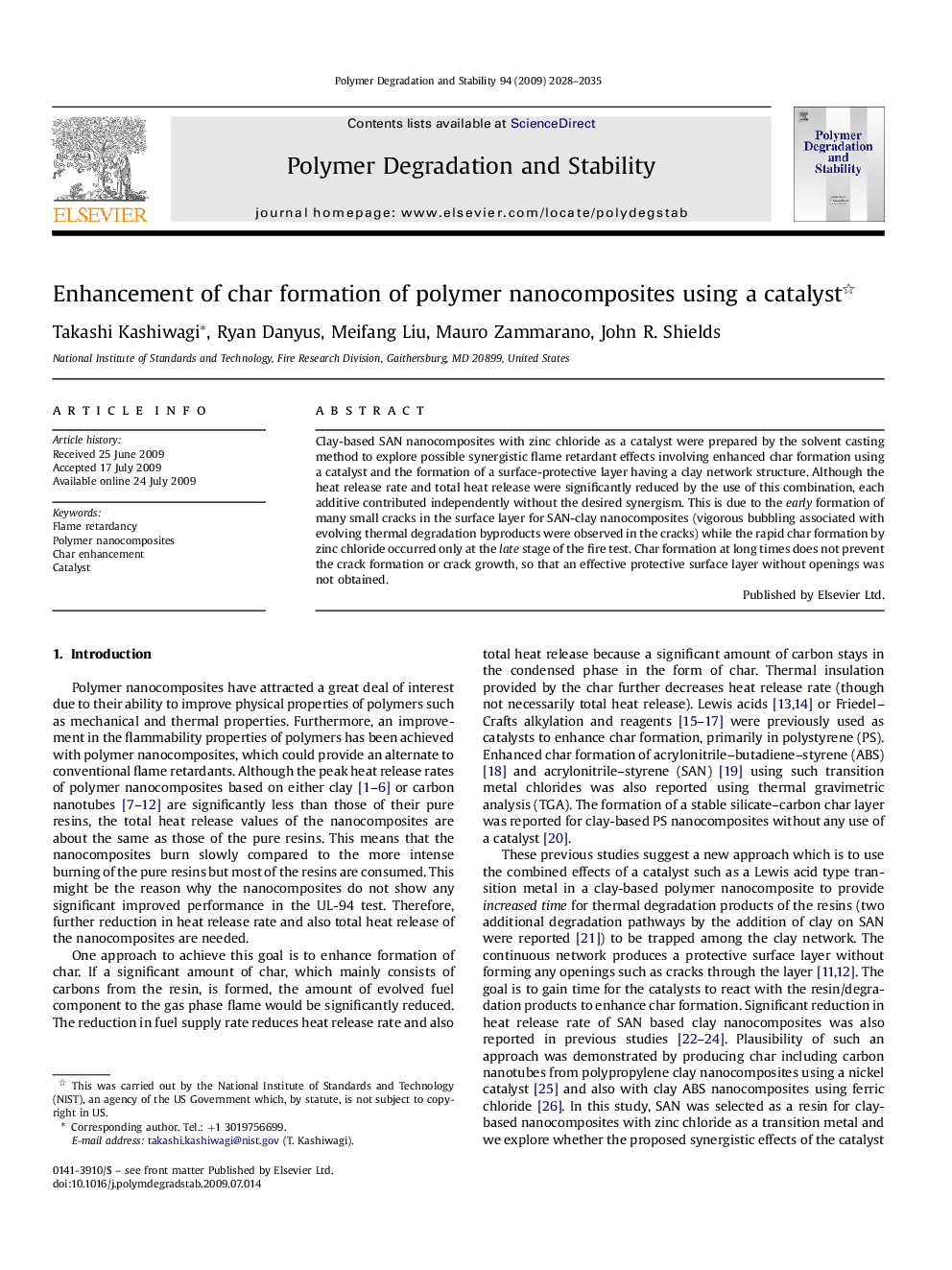| Article ID | Journal | Published Year | Pages | File Type |
|---|---|---|---|---|
| 5203765 | Polymer Degradation and Stability | 2009 | 8 Pages |
Abstract
Clay-based SAN nanocomposites with zinc chloride as a catalyst were prepared by the solvent casting method to explore possible synergistic flame retardant effects involving enhanced char formation using a catalyst and the formation of a surface-protective layer having a clay network structure. Although the heat release rate and total heat release were significantly reduced by the use of this combination, each additive contributed independently without the desired synergism. This is due to the early formation of many small cracks in the surface layer for SAN-clay nanocomposites (vigorous bubbling associated with evolving thermal degradation byproducts were observed in the cracks) while the rapid char formation by zinc chloride occurred only at the late stage of the fire test. Char formation at long times does not prevent the crack formation or crack growth, so that an effective protective surface layer without openings was not obtained.
Related Topics
Physical Sciences and Engineering
Chemistry
Organic Chemistry
Authors
Takashi Kashiwagi, Ryan Danyus, Meifang Liu, Mauro Zammarano, John R. Shields,
